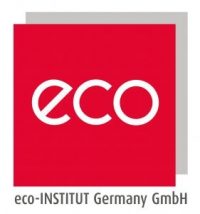A night of peaceful sleep is no myth if you know how to pick the right pillow materials. The list above includes ten pillow stuffing materials and ten pillow cover materials, along with their benefits and drawbacks.
There are different types of pillows. Some of them are breathable, while others are soft and gentle. But all of them have something interesting that serves a different purpose.
List of Pillow Stuffing Materials
Here’s the list of 10 prominent stuffing materials commonly found in most households.
1. Wool Pillow Stuffing Material
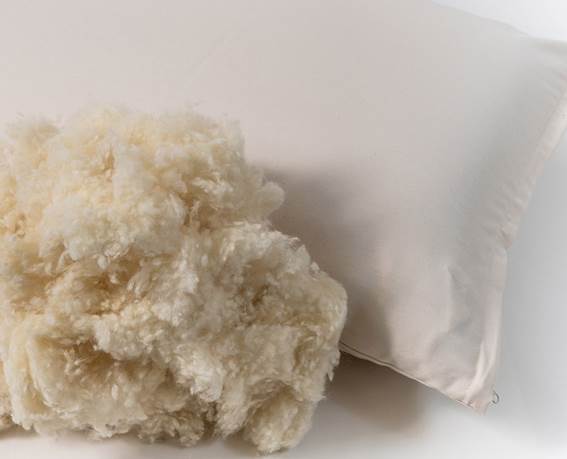
Easily available in the economical pricing range, the wool pillow stuffing provides a high comfort level in cold winters and hot summers.
Moreover, for sleepers living in colder parts of the world, wool pillow stuffing even offers improved insulation, and they are breathable in all four seasons. A few more facts about such stuffing is that they are flame-retardant and comes with dust mite repellent features.
- Pros:
- It makes your pillow firm and soft
- Best for allergy sufferers
- Ideal for all sleeper types
- Good airflow to absorb moisture caused by night sweats
- Cons:
- Wool pillow stuffing gets flatten soon
- Makes the pillow uneasy to settle below the head
- Wool material shrinks when washed
2. Cotton Pillow Stuffing Material
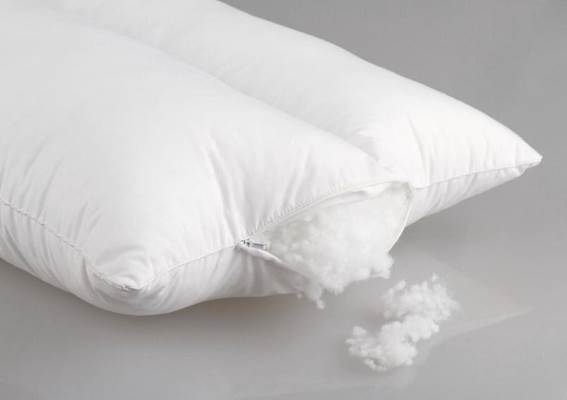
If you’re looking for cotton stuffing material, you are choosing a highly breathable and comfortable filling for your pillow.
With the soft touch, cotton stuffing is organically hypoallergenic. That means it won’t trigger your allergies, and you can have a relaxing good night’s sleep. Besides, it comes at a fewer price along with more durability.
- Pros:
- Keeps you away from harmful elements, which may trouble your sleep
- Includes a natural temperature regulator that offers sweat-free naps and sleeps
- Cotton stuffing is universally praised, and people find joy sleeping on it
- Cons:
- As time passes, cotton stuffing clumps together, causing your pillow to sink in
- Most sleeper types may not enjoy the extreme comfort as side sleepers do
- Cotton pillow fillings require frequent replacements
3. Latex Pillow Stuffing Material

Latex pillow stuffing is quite popular, but it’s expensive. Organic latex materials are commonly found in shredded or block forms, allowing you to adjust the pillow as per your need. Also, it makes your pillow softer and snuggly to get a comfortable sleep.
- Pros:
- The open-cell structure in the 100% latex stuffing makes more room for the air
- Latex pillow materials are ideal for sleepers with migraines
- It is naturally hypoallergenic, mildew resistant, and anti-fungal
- One of the most cooling stuffing available in the market
- They are good for all sleeper types
- Cons:
- New latex stuffing materials have a foam odor
- Latex pillow stuffing is pricey.
4. Buckwheat Pillow Stuffing Material
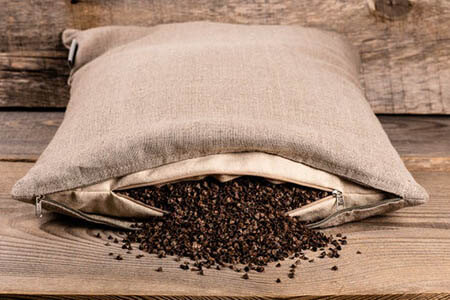
Buckwheat pillow fillings have been grown in demand over the past few decades. They are made of hull shells, and each pillow includes around 10 to 12 pounds of buckwheat hulls to fill a single pillow. Buckwheat pillow stuffing is known for being an excellent temperature regulator. That is why it’s the first choice among sleepers with sweating issues.
- Pros:
- Extremely long-lasting
- Hulls make the pillow more breathable and very comfortable
- Best choice for sleepers preferring high firmness
- Cons:
- The hulls make too much noise and distract sleepers
- This stuffing material is heavy
- You need a lot of time to adjust if you're used to fluffy pillows
5. Kapok Pillow Stuffing Material
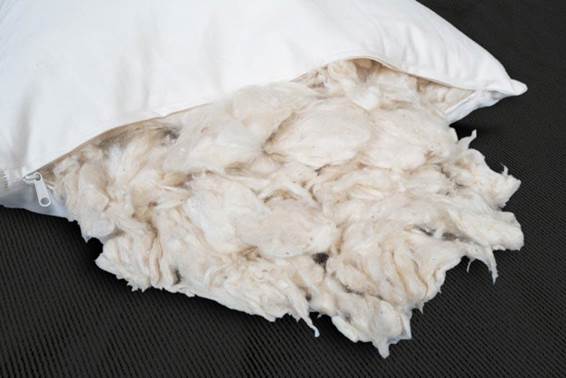
Although the Kapok pillow stuffing material isn’t cotton silk, it does give a similar silky and gentle feel beneath the head. The filling comes from organic tropical trees, allowing you to sleep without triggering your allergies. Plus, it makes your pillow plushy and soft to ensure better sleep. Besides, it doesn’t cost a fortune.
- Pros:
- It comes from a 100% non-toxic organic source
- A good solution for allergic sleepers
- The stuffing is environmental and vegan-friendly
- Gives you a soft, snuggly, and silky feel
- Cons:
- Kapok stuffing is not moldable', making it hard to keep them in the original shape
- Not ideal for all sleeper types
6. Polyester Fiber Pillow Stuffing Material

Polyester fiber stuffing is a more affordable option than the rest of the fillings. It serves sleepers that adore down stuffing but don’t recommend bird feathers instead, making this material vegan-friendly. Additionally, you can wash the polyester fiber filling with ease.
- Pros:
- It is one the cheapest pillow stuffing you can get
- The stuffing is hygienic and washable
- Polyester fiber is soft and cushy
- Cons:
- Does not support ventilation
- Causes dust mites
- Breaks down easily, giving you poor neck support
7. Memory Foam Pillow Stuffing Material
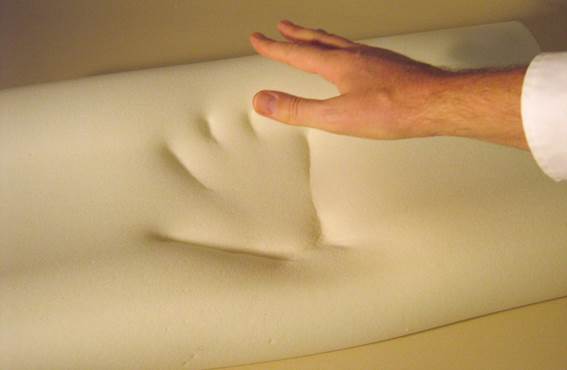
Made out of polyurethane, memory foam is widely used as a pillow stuffing. The material can be found in two forms – shredded or block. However, it is seen that the shredded version is easy to adjust, provides more contouring, and feels more plushy and comfortable.
- Pros:
- It molds according to your head and neck in just a few seconds
- Available in the affordable price range
- Comes with pressure relief and offers great comfort
- Cons:
- Memory foam pillow filling is flammable
- The chemicals used in the making of this stuffing causes respiratory conditions
- The material holds body heat and makes the sleeper suffer from extreme hotness
- It has a bad odor that goes away with time
8. Down Pillow Stuffing Material
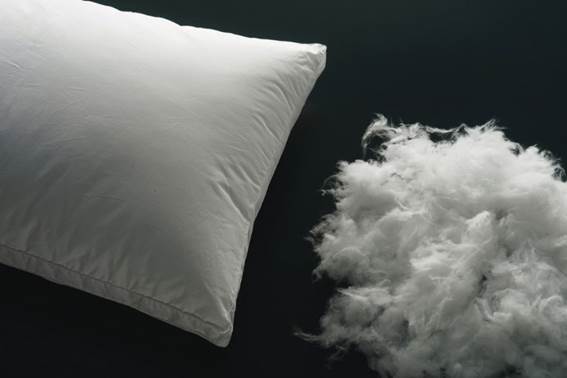
If you’re looking for some of the fluffiest pillow fillings, then down pillow stuffing is what you would enjoy under your head. Since they aren’t just feathers, you might find this material expensive to buy. But once it suits you, there’s no way back. Moreover, the down pillow is more breathable and moldable.
- Pros:
- It gives you a luxurious feeling and comfortable sleep
- Down pillow stuffing is lightweight and easy to carry
- Have a lifespan of more than 15 years
- Comes with temperature regulation features
- Cons:
- The material traps severe heat in summers
- Down pillow stuffing comes in premium pricing which is not friendly for everyone
9. Feather Pillow Stuffing Material
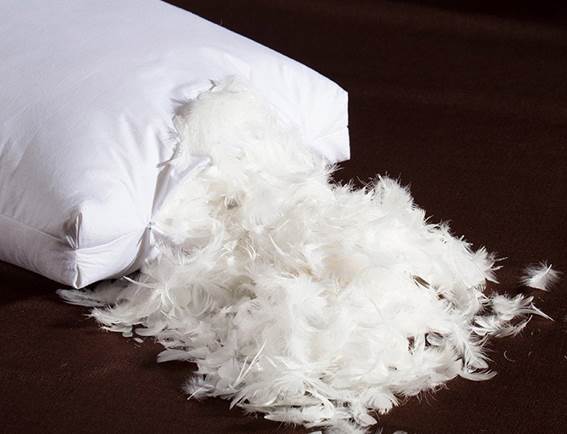
Those who can’t afford down stuffing can surely look for the feather pillow stuffing material as an alternative. The filling is very common in the market and available at an affordable price.
- Pros:
- Feather stuffing is lightweight
- It is moldable in any shape, making them extremely cuddly
- Cons:
- Sleepers with feather allergy shouldn't buy feather pillow fillings at all
- It can cause sweating and is hard to clean
- The feathers smell unpleasant after a few years of usage
- Feather pillow fillings are not durable, and you need to change them from time to time
10. Contour Pillow Stuffing Material
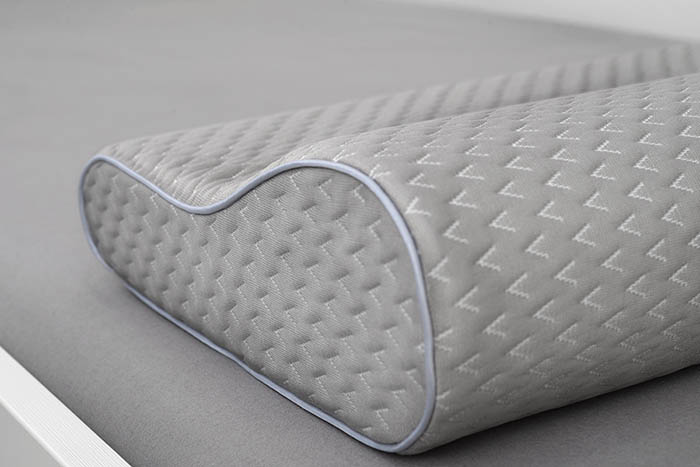
Contour pillow stuffing is designed to support the head’s anatomy. It is made with a combination of memory foam, buckwheat, and water. Although such stuffing is a new kid in the block, its gigantic demand has lowered the pricing.
- Pros:
- Provides great support to sleeper's head and neck
- Helps eliminate the snoring problem
- Promotes natural sleeping position with correct posture
- Suits best for sleepers who wear CPAP devices during the nighttime
- Cons:
- Still expensive than most of the pillow stuffing materials
- The stuffing leaves you sweaty and hot
- Chemical odors are common
- Not very durable
List of Pillow Cover Materials
As you learned about different pillow stuffing materials, let’s understand what pillow cover materials would help you get better sleep.
1. Satin Pillow Cover Material
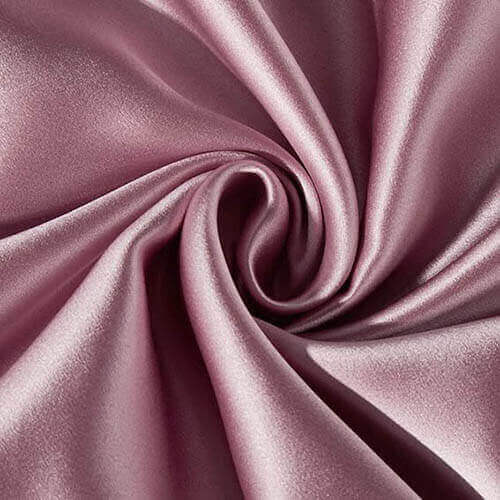
Satin pillow covers provide a cool and comfortable sleep. Satin pillow cases are also ideal for hair and skin’s health. Also, this cover material doesn’t leave any wrinkles on your face because it is soft and smooth.
- Pros:
- Less hair frizz, breakage and dryness
- Satin pillow cases don't attract dust mites and trigger allergies
- Best for all skin conditions, such as dermatitis
- Cons:
- Satin pillow cover material is expensive
- Less breathable
- Requires extensive care when it comes to washing
- The material is slippery, and you wake up with a stiffed neck
2. Nylon Pillow Cover Material
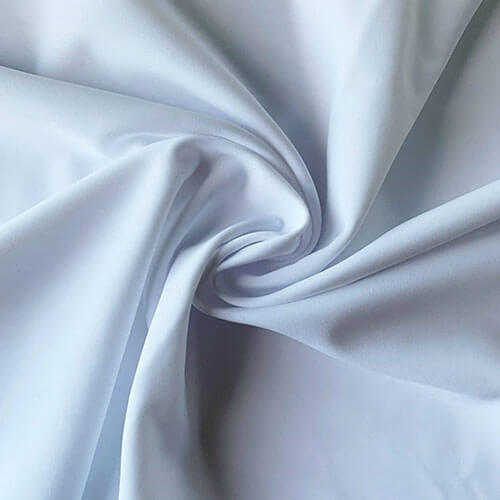
Nylon pillow cover material is stretchy, so it fits any head that lies upon it. But because there are no organic substances used in the manufacturing, nylon pillow cases don’t have moisture resisting properties. But comparatively, nylon pillow covers are inexpensive and easily available.
- Pros:
- Nylon pillow covers look fashionable
- The covers are washable and dry quickly
- Cons:
- Causes allergic reactions
- Less breathable
- Causing too much face sweat
3. Linen Pillow Cover Material
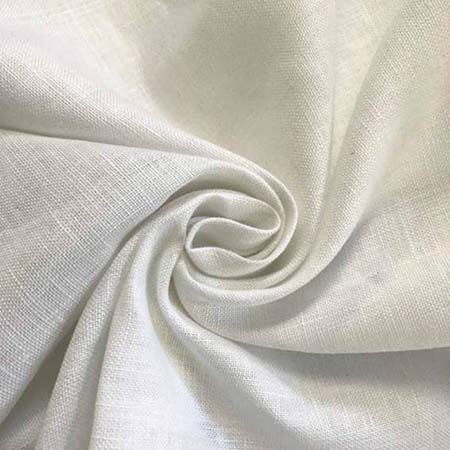
Anti-bacterial, durable, and easy-to-wash, if you’re going for the linen pillow covers, you’re choosing a calm sleep. Linen pillow cases are free from chemicals, which is why they are suitable for all skin conditions, especially when it comes to acne. Likewise, the material has temperature regulating properties, allowing you to sleep without breakouts.
- Pros:
- This cover material is long-lasting and naturally hypoallergenic
- It is highly breathable and anti-static
- Environmental-friendly and gets soft with every wash
- Cons:
- Linen pillow cases are expensive
- New linen pillow covers are thick and have a rough surface
- It gets wrinkled easily
4. Cotton Pillow Cover Material
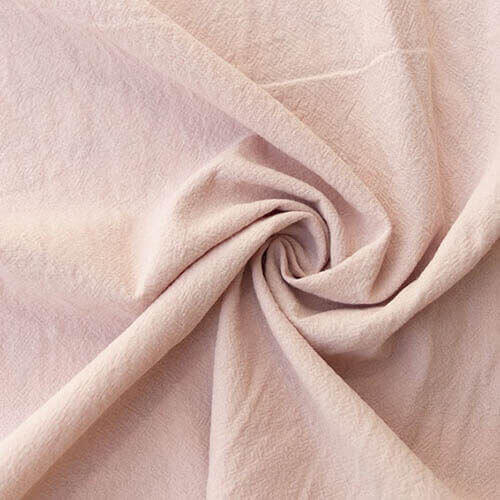
Cotton cover material is one of the most prominent types of pillow cases you can find anywhere. It is cool and pleasant to sleep on. Cotton pillow cases are made with numerous thread counts and pretty simple to wash, and even dries quickly.
- Pros:
- It remains cool in warm temperatures
- They are great examples of low-cost pillow covers.
- The more you use it, the softer it gets.
- Cons:
- They are not wrinkle-free and require ironing every now and then.
- Could leave temporary crease-marks on your face and skin.
5. Silk Pillow Cover Material
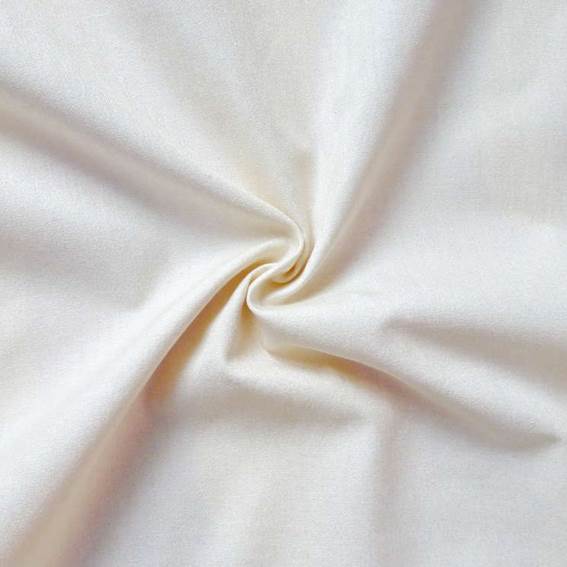
Sleeping on a shiny cover surely gives you a feeling of an emperor, and that’s what silk does. Moreover, if you choose silk pillow cover material, you vote for a wrinkle-free face every time you get out of bed. And most importantly, silk pillow cases are also magnificent for your hair, as it prevents them from being messed up.
- Pros:
- Silk pillow covers prevent overheating and sweating
- They are entirely breathable
- Doesn't cause allergies
- Cons:
- Silk pillow covers are expensive
- It requires special care, you just can't hand wash the stains
- Silk pillow cases lose their quality when exposed to sunlight
6. Bamboo Pillow Cover Material
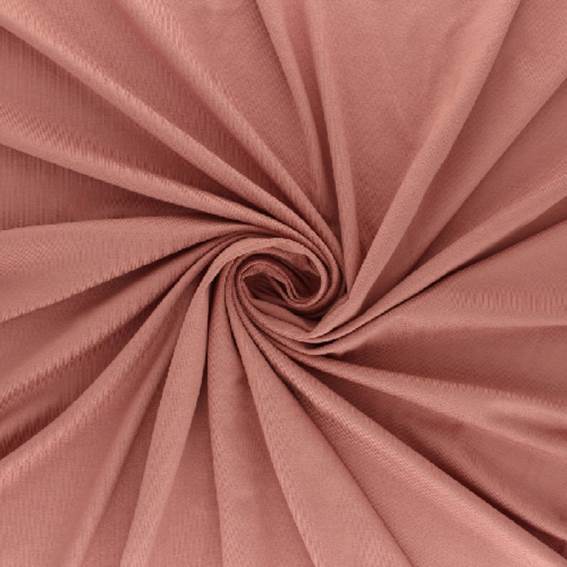
Bamboo pillow cover material is ideal for vegans because they are made using plant-based fibers. Bamboo pillow cases are also affordable because the main ingredient (bamboo) is easy to get. Besides, if you’re looking for pillow cases that replace silk, then bamboo pillow covers are the optimal choice.
- Pros:
- Bamboo pillow covers are naturally breathable
- They contain anti-fungal and anti-bacterial properties
- The material can be cleaned through manual as well as machine washing
- Cons:
- You can't use an ordinary detergent to clean bamboo pillow covers
- Expect wrinkles after every wash
7. Rayon Pillow Cover Material
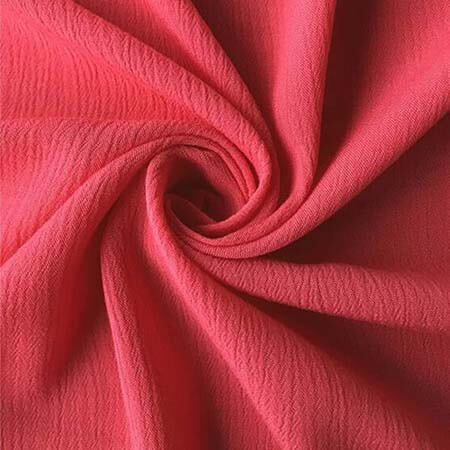
Rayon pillow cover is neither made with natural fiber nor synthetic fibers, but it is manufactured with an industrial process, making it look like silk. But, in reality, it’s not. That is one of the reasons why rayon pillow cases are affordable and makes your bedroom unique and attractive.
- Pros:
- Rayon pillow covers are breathable
- You can dye them at home to match your everyday bedding
- Cons:
- The fabric is not very durable
- Absorb body oils, water, and other moisture, causing clear spots on the surface
8. Polyester Cover Material
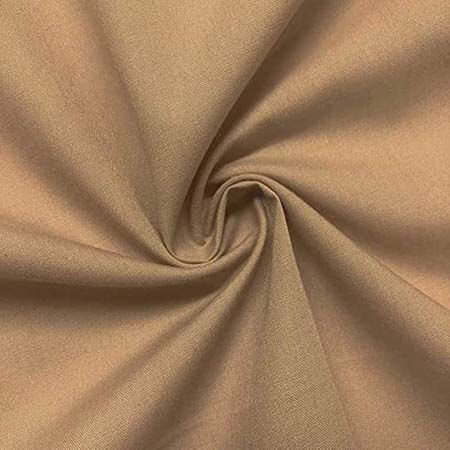
Polyester is an easy-to-wash durable fabric used as a pillow cover. It doesn’t require high maintenance. Additionally, it’s budget-friendly as compared to other pillow protectors. Moreover, you can find polyester pillow cases in a wide range of styles and textures.
- Pros:
- Flexible and stretchy, making you feel comfortable
- Easily available in different blends (such as cotton) to increase durability
- Doesn't lose its original form, and it's wrinkle-free
- Polyester pillow cases are water-resistant
- Cons:
- Difficult to wash spills and remove stains
- It could set off allergies due to its synthetic formation (chemicals like thermoplastic)
- Not cool enough to provide soothing sleep
- Doesn't promises high breathability
9. Microfiber Pillow Cover Material

Microfiber pillow covers are lightweight and durable. They are made with synthetic materials, which makes them prone to shrinkage and wrinkling.
Microfiber pillow cases are also soft and can be dyed to match the room décor. Apart from all that, these covers are breathable and stays cool in hot weather conditions.
- Pros:
- Inexpensive and readily available in the market
- They are both machine and hand washable
- The material is soft and smooth for the sleeper's skin
- Cons:
- Microfiber pillow cases are extremely absorbent
- The fabric is thin and easily flammable
- Makes your hair worse during the winter season
10. Fleece Pillow Cover Material
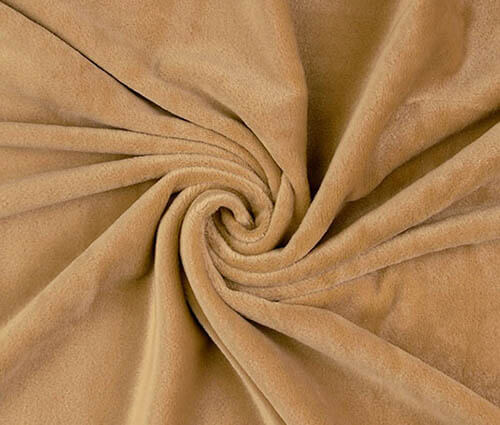
Fleece pillow covers are made of synthetic fibers. They have a soft touch and also breathable. And unlike some pillow cases mentioned in our list, fleece is less fatal and allergenic. More to this, it serves best during the winter times because the material is thick and offers warmth and coziness.
- Pros:
- Fleece pillow cases dry fast
- Fleece pillow covers are low-priced and durable
- Cons:
- Your head will sweat if you're using fleece covers in hot weather
- Fleece pillow cases require high maintenance and cannot be cleaned easily
- Its material absorbs bad odor, especially when the dirt is mixed with sweat
Pillow Material Certifications You Should Know
1. Global Organic Textile Standard(GOTS)
.png)
GOTS requires that textiles must contain more than 95% certified organic fiber and prohibits the use of raw materials and chemical substances that are harmful to the human body, such as heavy metals, formaldehyde, toxic solvents, and pigments that can cause allergies.
GOTS is one of the strictest certifications in the textile industry because it involves all the steps from the organic farming process to the manufacturing process and the packaging process. Also, social responsibility and environment protection will be also be taken in to consideration by GOTS.
GOTS-certified pillow material provides reliable and healthier options for consumers with higher standards of organic fiber.
2. Organic Content Standard (OCS)
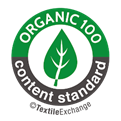
The OCS is issued by a US non-profit organization Textile Exchange, which can be applied to all non-food products containing 5%-100% organic materials. And the OCS conducts inspections and audits over product quality system, organic production planning, organic production process risk control.
As a certification that follow up on the process from raw material source to the terminal product, the OCS certification can be a demonstration of the proportion of the organic raw material contained in the final products
The differences between OCS and GOTS:
- The certification of GOTS involves three dimensions: production management, environmental protection, and social responsibility. While OCS is mainly targeted at the production managements.
- The certification objects are different: the objects of the OCS are non-food products manufactured with organic materials, while the objects of GOTS are limited to textiles manufactured with organic fibers.
- To get GOTS certified, the product should contain at least 70% of organic fibers, while products containing over 5% of recognized organic material can be certified by OCS.
3. Responsible Down Standard (RDS)

The RDS is about the humane protection of animals, and its purpose is to protect the animals from unnecessary harm during the supply chain of down and feathers. Companies can make it clear to their customers through RDS that they carry on humane practices when sourcing the raw materials for their products.
For humanitarian and animal lovers, pillows stuffed with RDS-certified down and feathers are more favorable options.
4. Cotton LEADS
The Cotton LEADS certificate programs was jointly launched by the U.S. and Australian cotton industry with the goal to lead the sustainable cotton sourcing and production in the global supply chain.
The U.S and Australia have been taking leads in water utilization, pest control, soil protection, and energy conservations, which makes the Cotton LEADS one of the strictest and most reliable standards in the cotton industry.
5. eco-INSTITUT (ECO)
The ECO is one of the most authoritative certificates in the latex industry. Latex pillows that bear the eco-INSTITUT-Label are low in hazardous substances and healthier for human bodies.
Although ECO is not directly related to the quality of the latex products, it can verify the proportion of the organic latex contained in the product – only products made from 100% natural latex can bear the ECO label.
6. Global Organic Latex Standard (GOLS)
The GOLS is a certificate under the Control Union World Group targeted at non-food latex products, and it is the world’s first global organic latex standard.
It is much like the GOTS, only it is targeted at latex products including latex pillows.ince the launch in 2006, GOLS has become a widely accepted and recognized certificate in the latex industry.
FAQs
What pillow filling is the coolest?
Down pillow stuffing is the coolest of all. But its level of coolness also depends on the source. For example, the down of European white goose has magnificent cooling properties compared to other birds.
Which is better, foam or fiber pillow?
Although the topic is debatable, let’s understand that both pillows work for different needs of the sleepers. Foam pillows do feel a bit firm, but they are very adjustable to the shape of your head.Contrarily, fiber pillows are cooler in contrast to foam pillows because they don’t absorb much heat.
What is the softest pillow material?
Down pillows are the softest pillows among all. The fillings are obtained from the bird’s undercoat, which is very fluffy and gentle in touch. A pillow made with down stuffing always offers the highest level of tenderness.
What are heavy pillows made of?
The pillow’s heaviness depends on the type of stuffing you choose. To name a few, latex and buckwheat pillow stuffing materials are heavier, increasing your pillow’s overall weight.
What is the best material for a pillow?
Any pillow filled with organic materials is the best pillow material, such as cotton, buckwheat hulls, and wool pillow stuffing.
What is the best pillow for neck problems?
Most sleepers find peace when sleeping on memory foam, buckwheat, feather, or latex pillows to make sure their neck problems don’t get worse. On the other hand, you can also look for the contour pillow stuffing material to overcome neck issues.
The End
We are Jingsourcing, a sourcing company based in Yiwu, China, dedicated to helping overseas business owners source and import products from China. If you need help in sourcing or importing pillows from China, please feel free to Contact Our Sourcing Experts.


